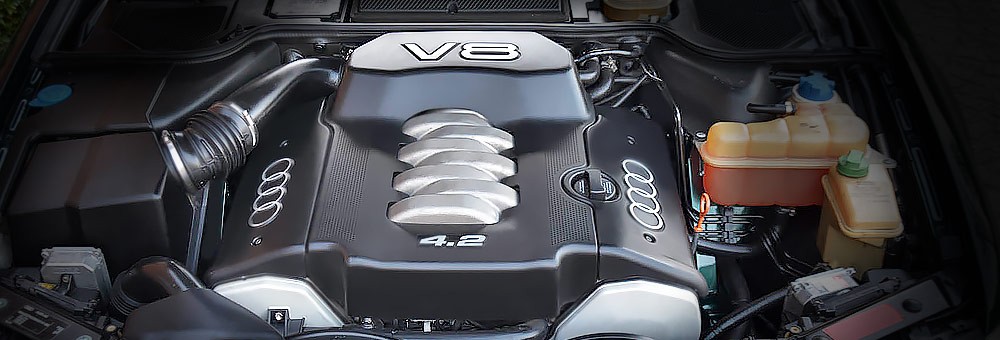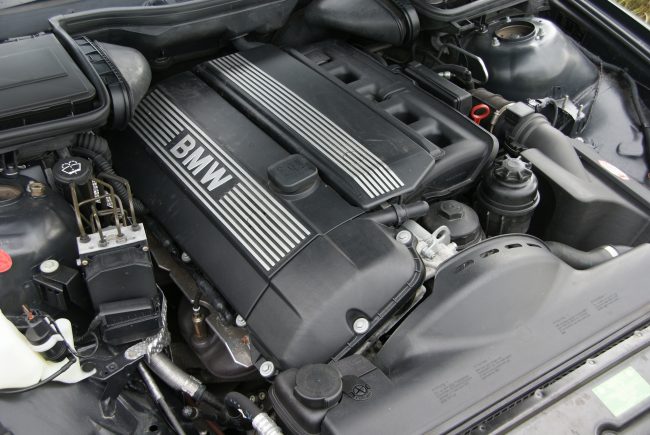
Audi 4.2 v8 engine - powertrain specification
Content
The 4.2 V8 engine has a 90° fork angle. Other special features include the 90 mm cylinder spacing and the location of the timing chain on the clutch side. The 4.2 V8 unit is considered exclusively modified, because the engineers of the German manufacturer used the rich experience associated with the operation and production of previous engine models.
4.2 V8 engine - technical data
The power unit was given the designation BVN. The total displacement was 4134 cm3 with a power of 240 kW (360 hp), a bore of 83 mm and a piston stroke of 95,5 mm with a compression ratio of 16,4:1. Also worth mentioning is the firing order: 1-5-4-8-6-3-7-2. The total weight of the drive unit was 255 kg.
The motor uses a Bosch control system - the EDC-16 CP + model, as well as a Common-Rail system with injection pressure up to 1600 bar and nozzles with 8 holes. An exhaust gas recirculation solution was also adopted with an attached water exhaust gas cooler and a purification system containing two oxidation catalysts and a maintenance-free diesel particulate filter (DPF). Exhaust emissions were in line with Euro IV standards.
Design solutions in the drive
The designers chose a case made of vermicular cast iron, divided along the axis of the crankshaft. The lower part uses a rigid frame, which is the housing of the main bearing caps. Thanks to these solutions, as well as the raw materials used, the weight of the 4.2 V8 has become lighter by as much as 10 kilograms compared to the 4.0 liter version.
The engine crankshaft was forged from 42 CR MO S4 steel and profiled so that the first and second order torques are balanced. The component is embedded in 5 bearings. It should also be noted that the transition radii of the crankpins have been further compressed to increase the strength of the crankshaft.
The design of the motor affects the high culture of work
One of the key decisions in this aspect was a very well balanced crank-piston system, which was not affected by vibrations, so that the engine did not produce much noise. In addition, the additional weight of the torsional vibration damper and drive plate provides optimal balance of the power unit.
The high quality of the 4.2 V8 engine was also influenced by the way the cylinder head was made, borrowed from the 3.0 L V6 model. It has four valves per cylinder, folding camshafts, hydraulic lash adjustment, roller rocker arms and spur lash adjustment sprockets.
Due to the fact that the bearing caps form a common frame with a flat sealing surface, and the material of the cap is plastic, and the fastening of the elements is strong, excellent acoustic insulation of the part is ensured.
Efficient cooling system
It consists of a water pump and a thermostat, which are mounted in a common housing located outside the drive unit. The pump is driven by chain D via two shafts and gears on the oil pump.
The water jacket reaches the hull through two injection ports that supply coolant to the outer sides of the power plant block. Water collectors are cast on both sides of this element, each of which is equipped with four holes through which the substance is supplied.
It accumulates in the chamber between the cylinder banks and flows to the radiator or directly to the suction side of the water pump, depending on the thermostat settings.
Exhaust system changes from DPF
4.2 V8 implements changes compared to previous versions. This refers to the use of thin-walled carborundum support. Due to the fact that the wall thickness is reduced by 37% compared to the 3.0L V8 version, the effective area of the catalyst is increased.
This reduces exhaust back pressure and shortens filter regeneration time. This procedure also made it possible to carry out the regeneration of the component already at a temperature of 580-600°C while maintaining a low exhaust gas backpressure.
